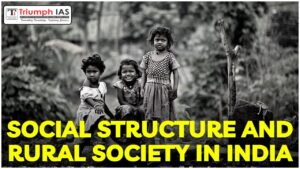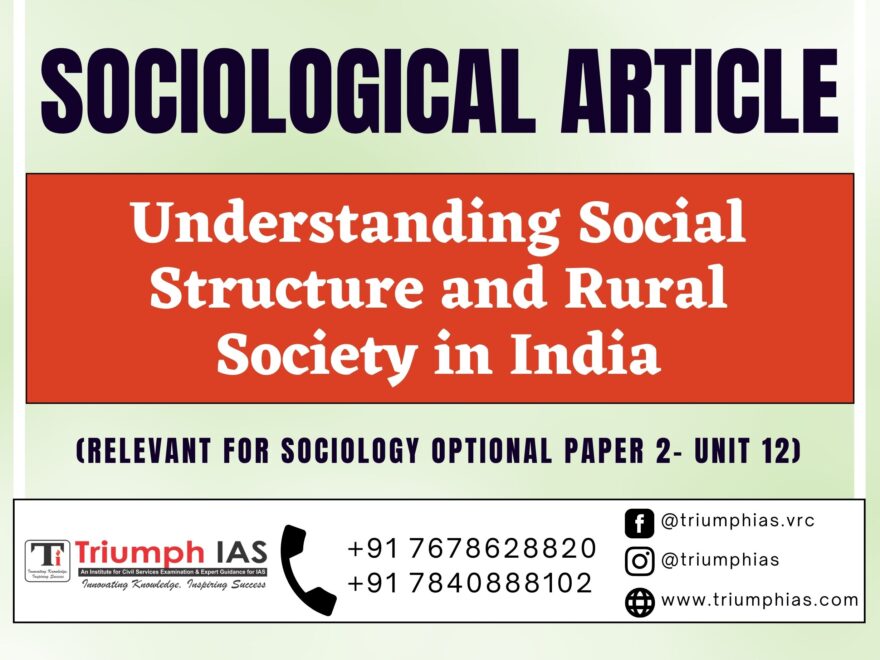
SOCIAL STRUCTURE: The world is made up of individuals who interact with one another to satisfy their needs. During this process, they take on certain roles and statuses in society that come with rights and obligations. Social behavior is guided by certain norms and values, resulting in the creation of social units such as groups, communities, associations, and institutions. Social structure is the organized pattern of these interrelated roles and statuses that form a relatively stable set of social relations within a society. It is the systematic arrangement of rights and obligations of individuals and groups within a social system.
RURAL SOCIAL STRUCTURE IN INDIA: India boasts of a rich and ancient civilization that traces its roots back to the Indus Valley Civilization that flourished in the third millennium B.C. Although there was a brief period during the Rig-Vedic era when urban centers were overrun, rural and urban areas have coexisted in India.
- Although rural and urban areas share some similarities, such as their interdependence in terms of economy, migration, and access to goods and services, they also have distinct differences in terms of size, demographics, culture, lifestyle, economy, employment, and social relations. Rural areas have a small population size and low population density compared to urban areas, which is why India is often referred to as a country of villages. In fact, around 65% of India’s total population resides in rural areas. Additionally, rural life is directly linked to nature, with agriculture being the main occupation. In fact, agriculture provides livelihood to approximately 60% of India’s labor force.
- Rural social institutions in India such as Family, Kinship, Caste and Village have been present for millennia and have deep-rooted historical structures. These institutions encompass all aspects of rural life, including social, economic, political, and cultural spheres, and reflect the complexity of social norms, values, statuses, roles, rights and obligations. The Village occupies a significant position in contemporary India’s social and cultural landscape. Despite India’s industrialization and urbanization over the past few decades, a vast majority of Indians still reside in over five lakh villages and depend on agriculture, directly or indirectly.
- In addition to its significance as a demographic and structural reality in modern India, the village has also held a crucial ideological status as a representation of the “authentic native life”. It has been regarded as a place where people can observe and understand the way in which local communities organize their social relationships and belief systems. The village has been an essential component of India’s image and imagination in contemporary times. Andre Beteille notes that the village is not simply a place of residence, but a design that reflects the fundamental values of Indian civilization. The institutional patterns and cultural values of Indian village communities have been viewed as a model of the “traditional society” in the 20th century.
The main characteristics of rural society can be summarized as follows:
- Villages are communities where people live and meet their basic needs within the village, fostering a sense of unity and friendliness towards each other.
- Villages are primary institutions that greatly influence the development of the rural areas.
- Religiosity is a significant feature of rural society, with faith in religion and universal power being prominent.
- Agriculture is the primary occupation of the villagers, which is dependent on nature, and farmers often worship the forces of nature.
- The joint family system is prevalent in rural areas, with families having strict control and administrative power over individuals. All members of the family share the burden of the family occupation, promoting a sense of cooperation.
- Group feeling is an important aspect of rural society, with villagers respecting the judgment and following the orders of their elders and panchayats. Society, caste, and panchayats have control over the individual in rural society.


One comment